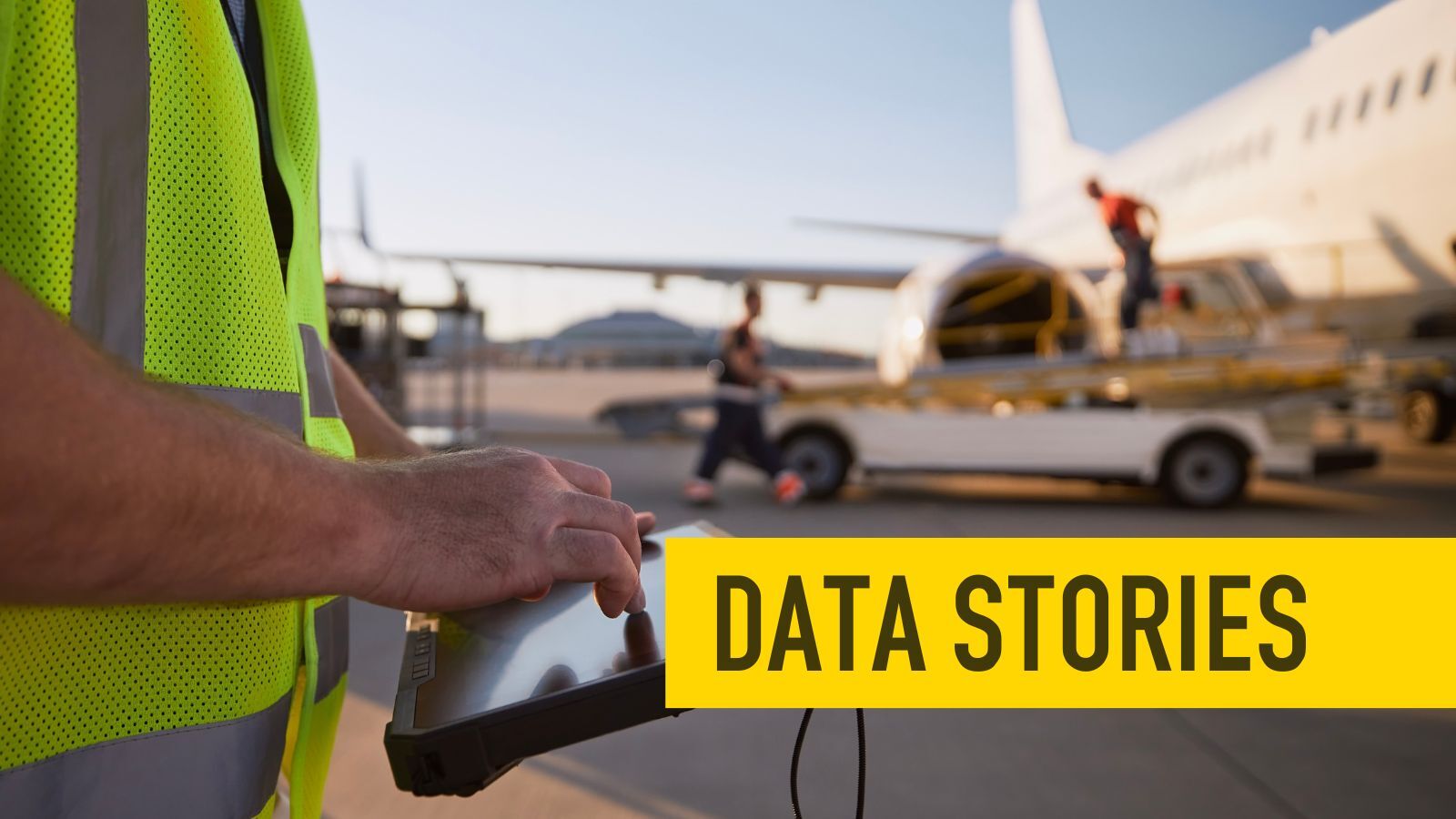Real-time data is reshaping how airport service providers (ASPs) manage their operations – helping them to reduce delays, boost efficiency and stay competitive. With rising passenger volumes, tighter margins, and unpredictable disruptions, it’s becoming increasingly essential for ASPs to invest heavily in operational efficiency. Yet, many providers are still planning based on outdated schedules, siloed systems, and limited visibility.
The leading providers thriving in this environment are doing one thing differently - they’re putting real-time and predictive data at the heart of every operational decision.
Why Accurate Flight Data Matters More Than Ever
Schedules data is critical for ASPs to keep operations running smoothly. However, accessing accurate, up-to-date schedules directly from airlines can be tricky, and often leaves ASPs reliant on external sources to fill the gap.
With disruptions like delays, gate changes, and diversions happening every day, real-time schedule data becomes a game-changer - helping ASPs shift gears from constantly reacting to problems to proactively managing and streamlining their operations and enhancing the traveler experience. Operating across more than 200 airports worldwide, Swissport illustrates the power of this shift.

Swissport
By integrating OAG's Schedules data, Swissport gained centralized visibility and control. This enabled more precise resource coordination, reduced delays, and improved turnaround times, regardless of local disruptions.
From Ground Ops to Airspace: A New Model of Visibility
When ASPs adopt a unified data approach, the benefits extend far beyond arrival boards. Ground operations, dispatch, air navigation, and customer service teams can all work from a single source of truth, boosting coordination and reducing bottlenecks. SANS (Saudi Air Navigation Services) partnered with OAG to gain situational awareness across its airspace and airports.

SANS (Saudi Air Navigation Services)
Real-time flight data gave SANS a complete operational picture, allowing quicker responses to delays and smoother traffic management. That same visibility, when applied to ground ops, translates into better baggage handling, catering, towing, and gate planning.
SANS reduced their data analysis efforts from 10 working days down to just 4 hours, delivering actionable insights rapidly. Achieving more than 95% accuracy with Schedules data, SANS is empowered to build data-driven strategies and confidently forecast with ease.
Strength in Prediction: Optimising Efficiency and Passenger Experience
When ASPs rely on flight data for operational workflows, the advantages extend far beyond gate assignments and flight displays. For airport operations teams access to reliable, real-time data is essential for coordinating services such as baggage handling, passenger assistance teams, and cabin cleaning - especially in busy and high-traffic terminals. AvTech - which specialises in passenger support and airport operational services - uses OAG’s Flight Info API to power time-sensitive resource deployment.

AvTech
By combining real-time schedules and flight status data, AvTech’s system automates workforce task assignments and enables faster, more proactive support. In one deployment, this approach led to a 50% drop in passenger complaints.
What Are Service Providers Still Missing?
Many providers still use spreadsheets or static planning tools that don’t account for the unpredictability of real-world operations. The opportunity cost? Higher staffing costs, idle ground equipment, missed SLAs, and dissatisfied passengers.
By unlocking the full value of flight data - including live updates, predictive models, and historical trends - airport service providers gain control, flexibility, and foresight. Whether it’s aligning staffing with demand or rerouting resources during disruption, smart data enables smart decisions.
Innovation in Action: How ASPs Are Already Transforming Operations
Airport service providers are increasingly adopting innovation to tackle operational challenges and drive efficiencies.
Here’s how groundbreaking technologies are transforming airport operations and enhancing overall performance:
- Assaia – AI for Turnaround Optimization: Assaia's "ApronAI" uses AI-powered computer vision and machine learning to monitor aircraft turnaround operations in real-time.
- Cameras track essential ground activities like fueling, catering, and baggage handling, automatically identifying delays and inefficiencies.
- Airports such as JFK and Seattle-Tacoma benefit from automated turnaround tracking, reduced delays, and optimized resource use.
- Zensors – AI Vision for Passenger Flow: Zensors transforms existing CCTV systems into intelligent, real-time analytics platforms.
- Its AI technology monitors queue lengths, gate occupancy, security checkpoint performance, and terminal crowding.
- Pittsburgh International Airport uses Zensors to dynamically manage terminal operations and significantly reduce passenger wait times without investing in additional hardware.
- Aurrigo – Autonomous Mobility Vehicles: Aurrigo develops driverless pods and baggage tractors to enhance airside and landside efficiency.
- The autonomous Auto-DollyTug navigates complex apron environments, streamlining baggage operations.
- Tested at Heathrow and Changi, these innovations reduce labor strain and carbon footprints, while improving operational efficiency.
- Aira – AR Navigation for Accessibility: Aira offers augmented reality guidance through smart glasses and mobile apps to assist visually impaired travelers.
- Real-time agent support enables passengers at airports like Los Angeles (LAX) and Houston to independently navigate terminals, highlighting technology's potential to improve inclusivity alongside efficiency.
The New Standard for Smarter Operations
Airport service providers who embrace data are leading the industry. They’re improving staff performance, increasing on-time metrics, reducing environmental impact, and elevating passenger experiences.
Flight data isn’t just for tracking arrivals and departures. It’s the backbone of efficient, responsive, and resilient operations.



